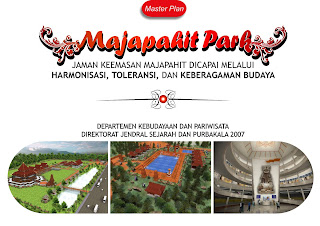SUPERSTAR PUPPET

Yesterday (29 Jan) I was invited to the opening of exhibition about "Wayang Superstar" (wayang is puppet) with the 'dalang' (player) Ki Enthus Susmono. It was in the restaurant of Tropen Museum, Amsterdam. The guest were welcomed by traditional Indonesian drink, 'cendol' or 'dawet' and Indonesian snacks. And in this kind of occasion for sure I met a lot and a lot of friends and acquitances from cultural heritage network. Back to Ki Enthus, he delivered his speech in a special way with a self portrait puppet and a translator because he doesn't speak much of English. He didn't hesitate a bit to tease the female translator in public; his puppet did it but who moved the puppet? Him. Ki Enthus is nowadays popular in Indonesia because of his unconventional approach to perform his puppets. He made contemporary profiles like Saddam Hussein, George Bush, etc. He created also different kind of stories for his various public segments : young, old, urban,...






